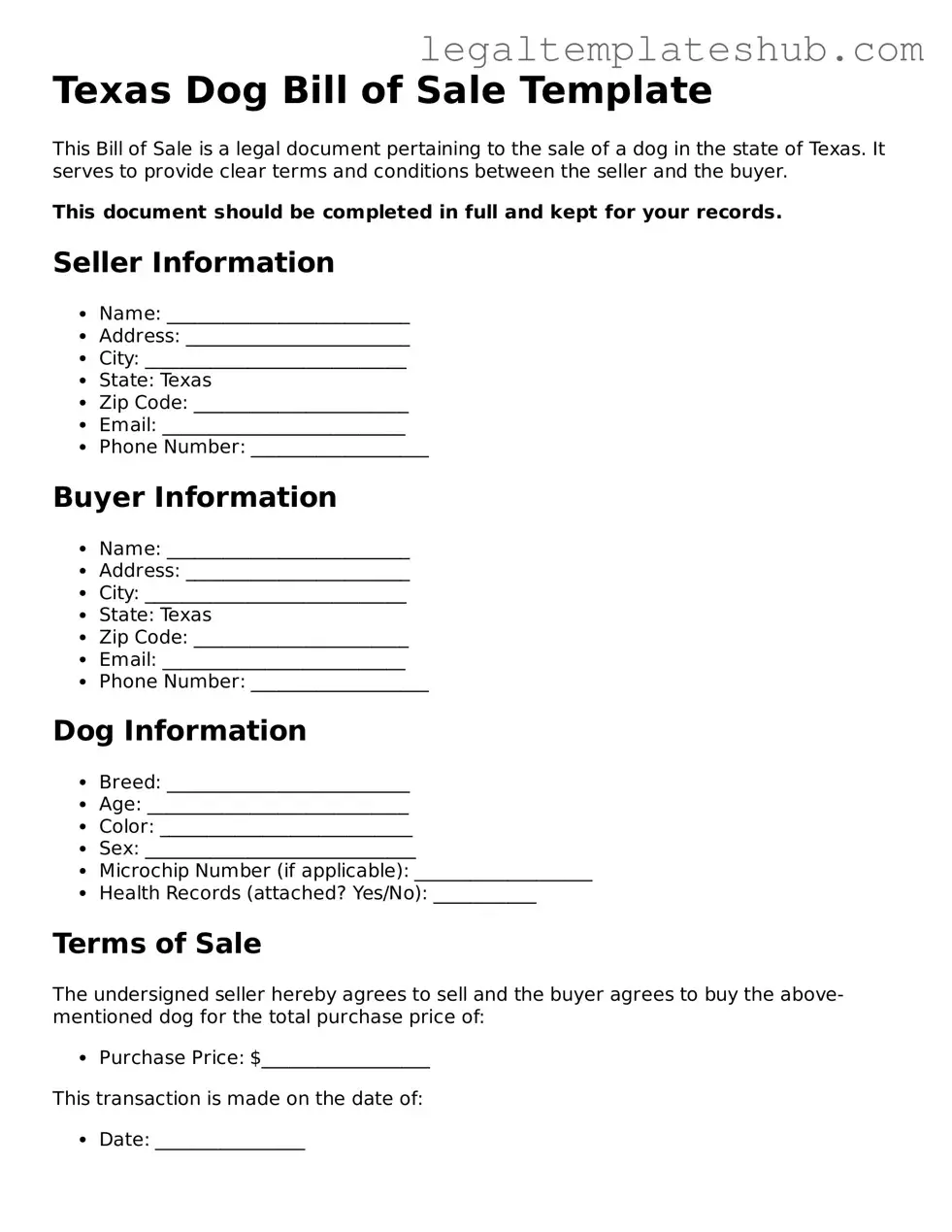Instructions on Filling in Texas Dog Bill of Sale
Once you have the Texas Dog Bill of Sale form in hand, you're ready to fill it out. This document is essential for recording the transfer of ownership of a dog. Take your time to ensure all information is accurate, as this will help prevent any misunderstandings in the future.
- Begin by entering the date of the sale at the top of the form.
- Fill in the seller's information, including their full name, address, and contact number.
- Next, provide the buyer's information, including their full name, address, and contact number.
- Describe the dog being sold. Include details such as the dog's name, breed, color, age, and any identifying marks or microchip information.
- Indicate the sale price of the dog. Clearly state the amount in both numerical and written form.
- If applicable, note any warranties or guarantees regarding the dog's health or temperament.
- Both the seller and buyer should sign and date the form at the bottom to validate the transaction.
After completing the form, ensure that both parties retain a copy for their records. This documentation will serve as proof of ownership transfer, providing peace of mind for both the seller and the buyer.
